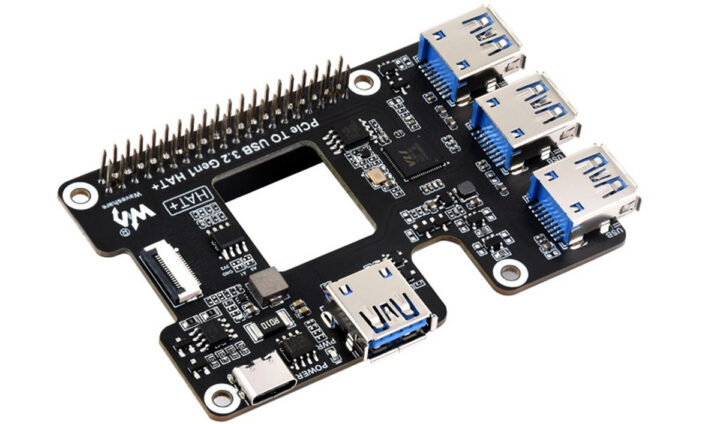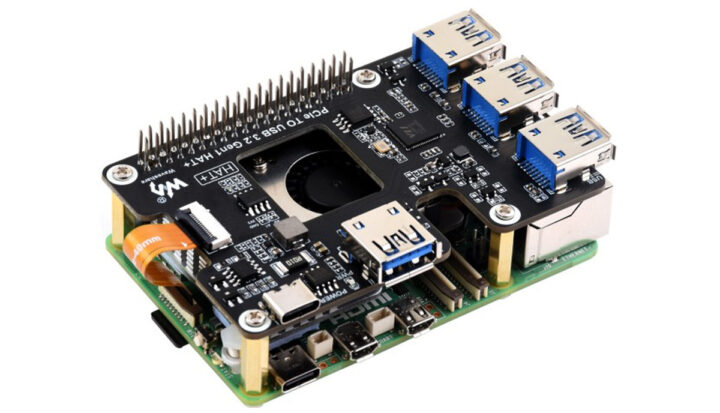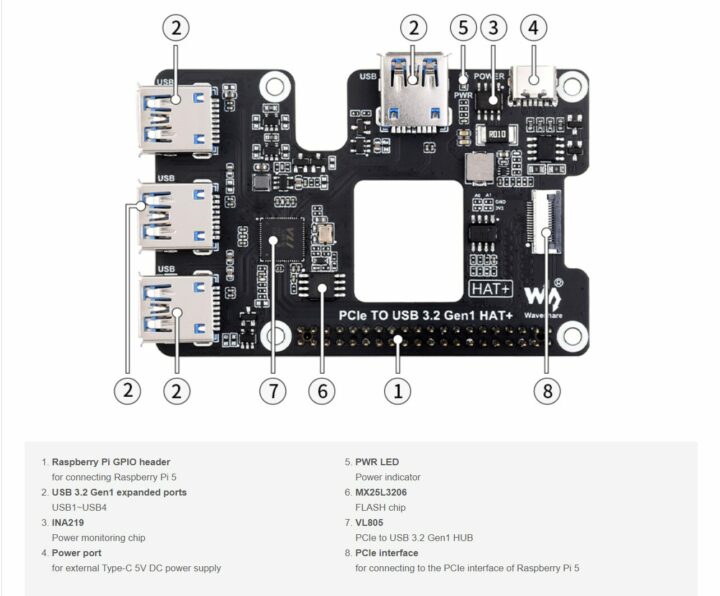Waveshare ‘PCIe to USB 3.2 HAT+’ is an expansion hat that adds four USB 3.2 ports to the Raspberry Pi 5. The HAT+ features real-time power status monitoring and software-controlled USB power management, along with an onboard EEPROM for storing HAT ID and product data. The HAT is mounted on top of the Raspberry Pi cooler and has an airflow vent to help keep the Pi cool.
This new module leverages the HAT+ standard to add 4 additional USB 3.2 ports to the Raspberry Pi 5. Previously, boards like PineBerry Pi HAT+, Geekworm X1003/X1004, and Mcuzone MPW7 have used the HAT+ standard for various attachments, such as converting the Pi 5’s PCIe into an NVMe SSD adapter, enabling access to Google’s TPU, or adding a PCIe x16 socket.
Waveshare PCIe to USB 3.2 HAT+ Specifications
- PCIe x1 Gen2 mode
- Only supports Raspberry Pi 5 Model B.
- Equipped with VL805 original high-performance main control chip.
- Reserved airflow vent for cooling fan to enable better cooling
- Support USB power control
- Dimension – 85 x 49mm
This module adds four USB 3.2 Gen1 ports to the Pi 5, using a VL805 PCIe to USB conversion chip. It also gives access to all the GPIO headers for easy connection. Power monitoring is handled by an INA219 chip, and there’s a Type-C port for external power. Additionally, the module features a PWR LED indicator and an MX25L3206 flash chip, improving functionality for Raspberry Pi 5 users.
The company states that the device is plug-and-play, meaning no additional software or hardware is needed for the board to work. They also offer an installation guide and additional how-to guides on their wiki page. However, they clarify that GPIO control is not supported by default; soldering a 0R resistor is required for this functionality, instructions for which can be found on the same wiki page.
The PCIe to USB 3.2 HAT+ is available for purchase on Amazon for $27.99, but you’ll also find it on the Waveshare store priced at $19.99 excluding shipping.
Debashis Das is a technical content writer and embedded engineer with over five years of experience in the industry. With expertise in Embedded C, PCB Design, and SEO optimization, he effectively blends difficult technical topics with clear communication
Support CNX Software! Donate via cryptocurrencies, become a Patron on Patreon, or purchase goods on Amazon or Aliexpress







